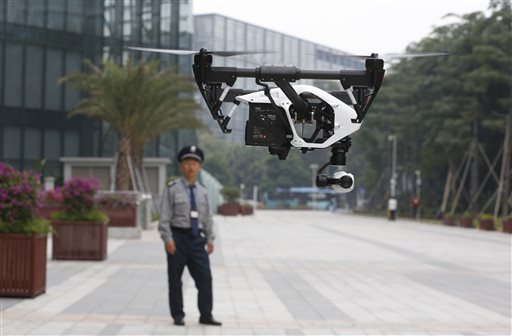Drone revolution draws near, but big obstacles remain
BOULEVARD, California – The drones are coming.
Not as flying deliverymen that bring diapers, books or soup cans to your home, a vision put forth by Amazon CEO Jeff Bezos to much fanfare a little more than a year ago.
Instead, drones will help spray crops, inspect high-voltage power lines and hover over movie sets to provide directors with new vantage points. They will also work for insurance companies, real estate agencies, ski resorts and dozens of other businesses.
Eventually.
For now, this all remains theoretical. Except for a few locations, U.S. airspace is closed to commercial drones. Regulators say the danger is too great, and they want to go slow easing unmanned aircraft into the already crowded skies.
Advocates of the young drone industry complain that the long wait is keeping them grounded. Big-money investors are generally staying away, waiting for clear government guidelines. And the blanket flight prohibition has prevented companies from experimenting and advancing the technology. That includes developing sophisticated collision-avoidance systems or finding ways for the aircraft to navigate without human help.
“Most of these drones have very limited safety features,” says Maryanna Saenko, an analyst with science and technology consultancy Lux Research. If one crashes, “it’s a four- or five-pound brick coming out of the sky.”
Most Americans associate drones with the military, which uses unmanned aircraft to survey battlefields and hunt terrorists. In a similar manner, businesses of all kinds envision using them to perform jobs that are too difficult or dangerous for humans.
If safety and regulatory obstacles can be overcome, within the next three years, drones and the companies that support them could generate $13.7 billion worth of economic activity in the U.S. and create 70,000 new jobs, according to the industry’s trade group, the Association for Unmanned Vehicle Systems International.
That’s just domestically. In less than a decade, as many as 32,000 commercial drones could be flying worldwide, according to aerospace consultancy Teal Group. Only a third will be in the US.
The Federal Aviation Administration plans to release guidelines soon about who can fly drones weighing less than 55 pounds and under what conditions. They might include the extremely stringent — and costly — requirement that operators have a pilot’s license.
That means some of the most ambitious drone ideas, like Amazon’s package-delivery system, will probably have to wait. First, drones will tackle the hard-to-do jobs, the dangerous industrial tasks, often in remote places.
The first adopters
To see the potential of drones, go to a plateau in the Southern California desert covered with cacti and brush. There, Teena Deering, a former Navy helicopter pilot who later taught drone warfare, is testing the idea of using unmanned aircraft to inspect power lines.
A generation ago, military pilots would retire and fly for airlines. Today, they are working on drones.
“It’s just the way of the future,” Deering says.
With a few quick movements of a wireless controller — the type used for model airplanes — Deering sends a 1-pound (450-gram) drone racing into the sky around a 165-foot (50-meter) tower. Live video streams back from the drone’s camera, showing her the condition of the lines.
Normally, the remote lines are inspected by helicopter, a difficult job that costs $1,200 an hour. But San Diego Gas and Electric thinks that drones might be a cheaper, faster way.















